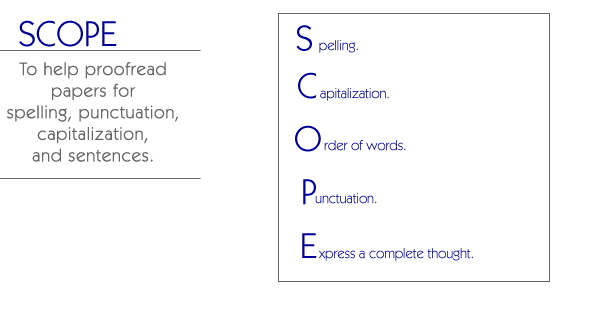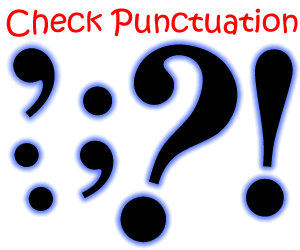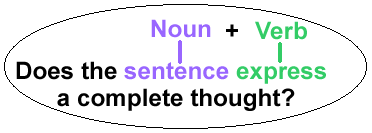 |
|
|||||
|
|
|
|
|
|
|
|
| |
|
|
||||
 With this strategy, you re-read your paper five times. Each time you look for a different type of error. The first time you read your paper, you check for spelling errors. You find each of these and correct them. The second time you check for capitalization; the third time for order of words; the fourth time for punctuation; and the fifth time for grammatically correct sentences. It may take a long time to re-read your paper five times, but it may be the only way to concentrate on certain types of errors and find them. It may be too hard to try to find five different types of errors at one time. |
S
pelling.
|
 |
C
apitalization.
|
 |
O
rder of words.
|
 |
| P unctuation.
|
 |
| E xpress a complete thought.
|

|
| |
|
|
|
|
|
|
|
| |
 |
||||||
|
|
|
||||||
| |
|
||||||
| |
|
|
|
|
|||
| |
|
|
|||||